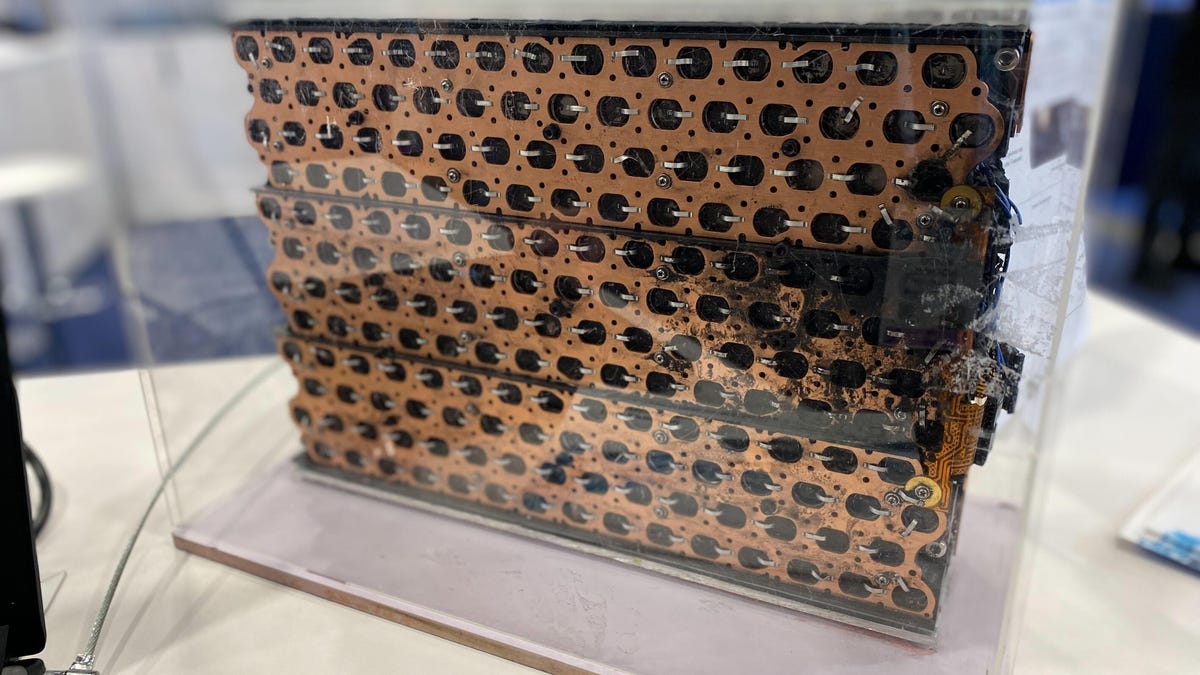This Partially Blown-Up Battery Pack Might Make EV Cars Safer and Lighter
Today's batteries need to be able to take some punishment. This company thinks its cooling tech is a solution.

Xing Mobility tested its battery cooling technology by driving three needles into the side of a battery pack. You can see where those cells blew up, but the rest of the pack looks alright.
I've seen a lot of batteries on trade show floors. This might have been the first time I'd seen one that had exploded. One end of the battery pack was charred like an ashtray. The other end looked fine. That was part of the pitch Xing Mobility had for its battery tech at CES 2024.
Xing Mobility, a Taiwanese battery company, demonstrated how its battery packs handled a three-needle test, in which a trio of nails were driven into the side, puncturing three cells. Those cells, as you can imagine, caught fire.
What the company wanted to brag about was the speed at which those explosions were contained and the fact that most of the cells in the module were undamaged. Temperatures spiked to 1,400 degrees Celsius (2,550 degrees Fahrenheit), but returned to normal within 30 seconds, the company said. Not only did most of the other cells in the module not explode -- they maintained their charge.
The reason: Those cells were directly immersed in a nonconductive lubricant made from petroleum. That lubricant can contact the whole surface of every battery cell, allowing it to cool more quickly and effectively. Xing Mobility has developed the technology and is working with manufacturers to include it in trucks and tractors now, but the company hopes it can provide lighter, safer and longer-lasting batteries for electric vehicles soon.
The company started out trying to build an electric race car, Xing Mobility's Hisou Hochen told me. It discovered similarities between how race cars are designed and how other specialty vehicles, like tractors, work. Because of the difficult life that tractors and trucks have, the company has focused on building batteries that can take some punishment.
This is what Xing Mobility's battery packs look like when they haven't exploded.
Hochen told me that immersion technology has other advantages. It can reduce the fluctuations in temperature as batteries cycle, reducing the wear and tear that the cells take through normal function. That could extend the lifespan of batteries and help them maintain more of their capacity over time.
Xing Mobility is putting this tech through longer-term tests of thousands of cycles, which takes a while to do, but Hochen said the early results have been promising.
The immersion cooling tech also allows batteries to take up less space (because you don't need space for cooling between modules) and less weight because of that structure. The cells can also be arranged in different configurations, such as attached to the chassis of a vehicle, Hochen said.
Check out some of the other energy tech we've seen at CES 2024, like a home battery you can take with you.

